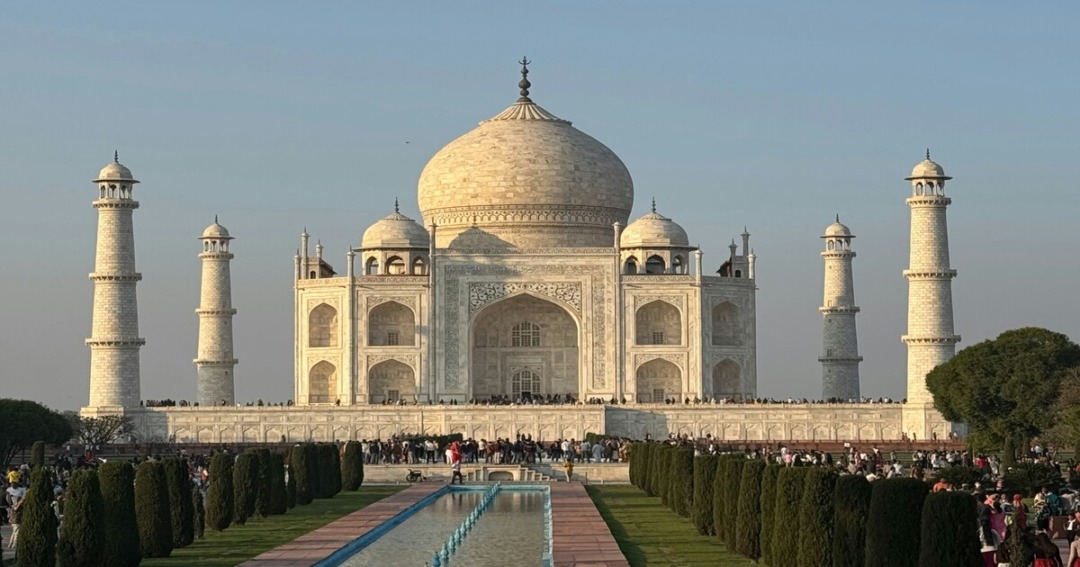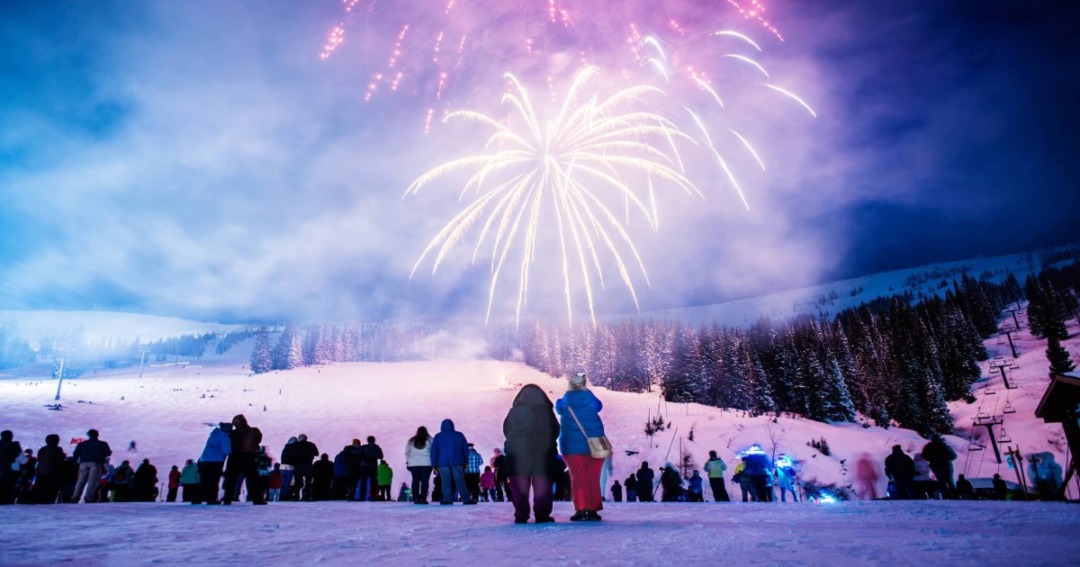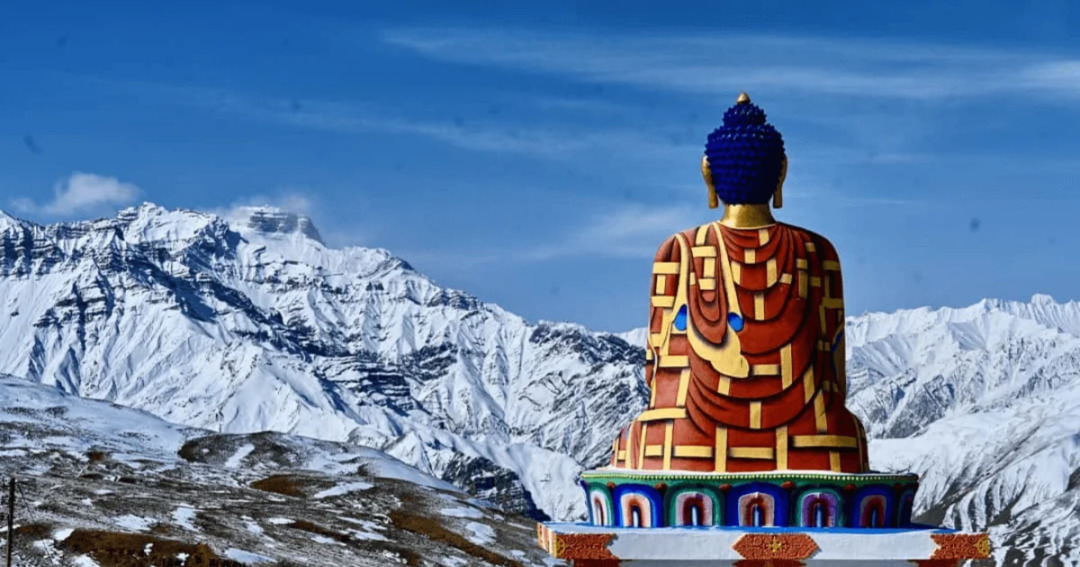
![]()
you’ve ever wondered what the Himalayas look like when the world disappears under thick silence and endless snow, spiti in winters is the closest answer. This remote cold desert, already rugged through the year, transforms dramatically during the winter months. Everything slows down—roads, people, movement, sound. But it is precisely this stillness that draws explorers, wildlife photographers, seasoned travelers, and those who want an experience beyond the usual mountain getaway.
Before we go deeper into routes, weather, wildlife, and local life, remember one thing: spiti in winters is not a casual holiday. It is raw, unpredictable, and stunning to the point of unreal. If you’re looking for cafés, smooth roads, or easy sightseeing, visit in summer. If you want solitude, adventure, and a true Himalayan winter, this is the place to be.
?Did You Know that Spiti has been included under the Tentative List of UNESCO Cold Desert Biosphere Reserve. Spiti, locally pronounced as ‘Piti’ (‘middle country’) that lies between Tibet and India, has undergone a lot of regime shifts. What the tentative listing emphasises is the synergy between nature, culture, and human resilience: a fragile cold-desert ecosystem with sparse vegetation and minimal water, alongside communities whose traditions, architecture, agricultural practices, and spiritual belief systems evolved in harmony with this environment. The listing underlines its uniqueness among cold deserts worldwide, and could help support conservation, sustainable tourism, and protection of both natural and cultural heritage in the valley.
What Makes Spiti in Winters So Special?

The moment December arrives, the valley slips into its most dramatic form. And for many travelers, spiti in winters is the only version of Spiti they want to see. The landscape becomes a monochrome world—white snow, brown cliffs, deep blue skies. Villages like Kaza, Kibber, Langza, Komic, Hikkim, Tabo, and Dhankar look like scenes from a frozen film set.
For photographers, creators, and wildlife enthusiasts, spiti in winters is a goldmine of unique frames—snowy monasteries, prayer flags against icy winds, frozen waterfalls, and untouched snowfields stretching endlessly.
Spiti Valley in December: What to Expect
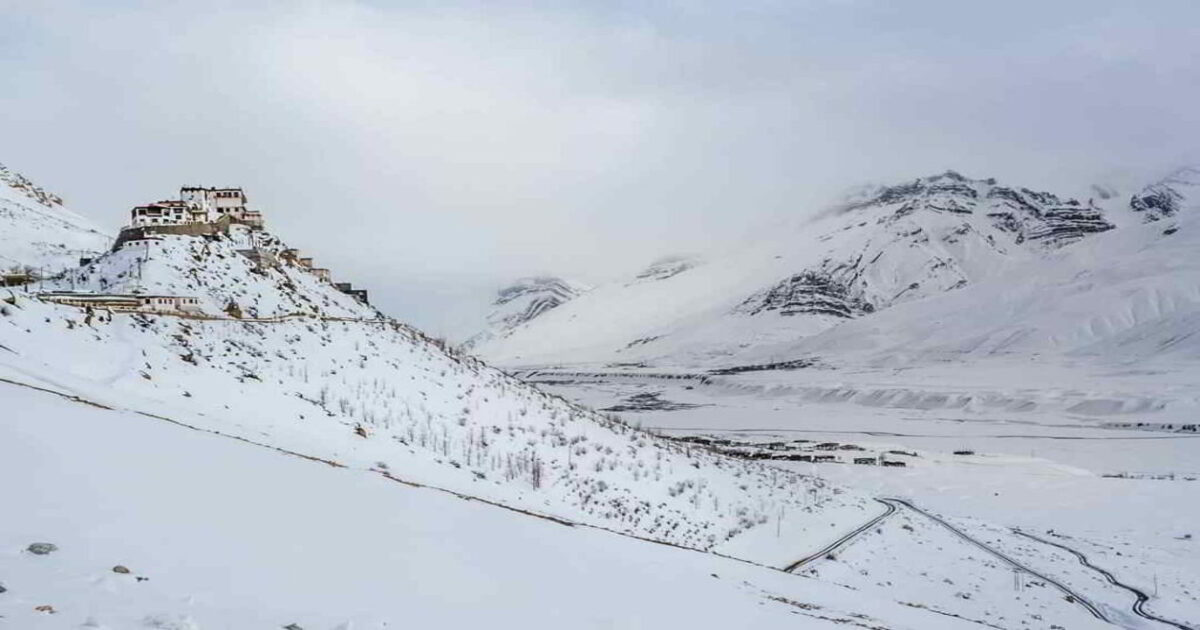
Travelers often ask what spiti valley in december actually feels like. Snowfall starts around mid-December, temperatures drop drastically, and routes may face temporary closures.
Yet spiti valley in december is also one of the most beautiful times to be here. Roads are still somewhat manageable, villages remain accessible, and the early snow creates spectacular landscapes without the extreme isolation of peak January.
Homestays start stocking up for the winter, locals prepare for festivals, and the valley takes on a calm rhythm. If you want a mix of winter beauty without the harshest conditions, spiti valley in december is ideal.
IF YOU WANT TO EXPLORE SPITI IN SUMMERS

Here’s the Ultimate Guide for the Perfect Excursion of Spiti Valley in June
How to Reach Spiti in Winters- This is one of the most important questions because access is limited.
Manali Route — Closed
The Manali–Rohtang–Kunzum route shuts around mid-October and does not open until May. So for spiti in winters, this route is not an option.
Shimla Route — The Only Way In
From Shimla, travellers follow the old Hindustan–Tibet Highway through the scenic Kinnaur stretch — crossing Narkanda and Rampur before heading towards Kinnaur’s peaceful valleys like Sangla and Kalpa.
From here, the road cuts across high cliffs and frozen patches to reach Nako, then enters the cold-desert terrain of Tabo and finally Kaza. This route stays open through winter because it avoids the high mountain passes like Kunzum La, which shut after early snowfall.
Weather Conditions: Spiti Valley in Winters
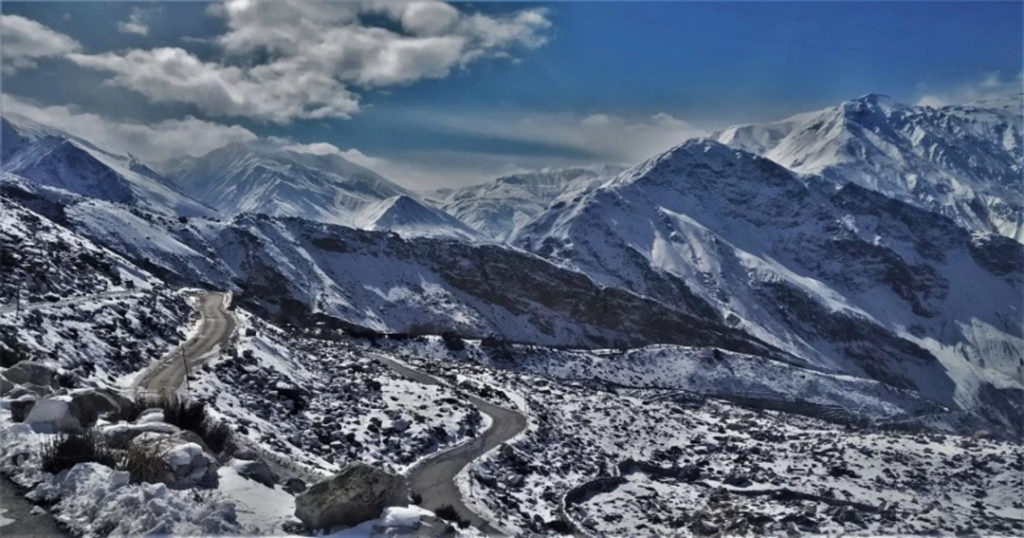
The temperatures during spiti in winters are severe. This is not an exaggeration.
Daytime: –5°C to –10°C
Night: –15°C to –25°C
Experiencing Local Life in Winter
One of the biggest reasons travelers choose spiti in winters is to experience how locals survive and celebrate in such extreme conditions. Winter brings families together indoors around the bukhari (wood stove). Food becomes simple but nourishing—barley dishes, thukpa, butter tea, momos, and homemade pickles.
Wildlife Sightings: Snow Leopards and More

Spiti is famous for being home to one of the highest densities of snow leopards, also called the “grey ghost”. Winter draws them closer to inhabited areas because prey like ibex and blue sheep descend to lower altitudes.
The region around Kibber, Chicham, and Pin Valley becomes a prime zone for winter wildlife expeditions. In fact, many visitors come solely for a winter spiti expedition, where guides and spotters track pugmarks, vantage points, and movement patterns of the elusive cat.
Apart from snow leopards, you may see:
- Himalayan foxes
- Ibex
- Blue sheep
- Golden eagles
- Lammergeiers
- Red Fox
- Tibetan Wolf
- Himalayan Marmot
Festivals and Local Events
The Spiti Snow Festival is one of the valley’s most spirited winter celebrations, bringing warmth and colour to the otherwise stark months. Held across different villages, the festival showcases traditional dances, yak races, local food, and rituals that highlight the valley’s deep connection with Tibetan culture. The festival becomes even more special for those travelling during spiti in winters, because you get to witness local communities celebrating despite the challenging climate.
If your timing matches, winter brings one of the most vibrant celebrations—Losar, the Tibetan New Year. Though temperatures are low, the energy during these cultural events is unmatched. Locals gather, perform rituals, cook festive meals, and pray for a prosperous year.
Villages to Explore – What to Do?
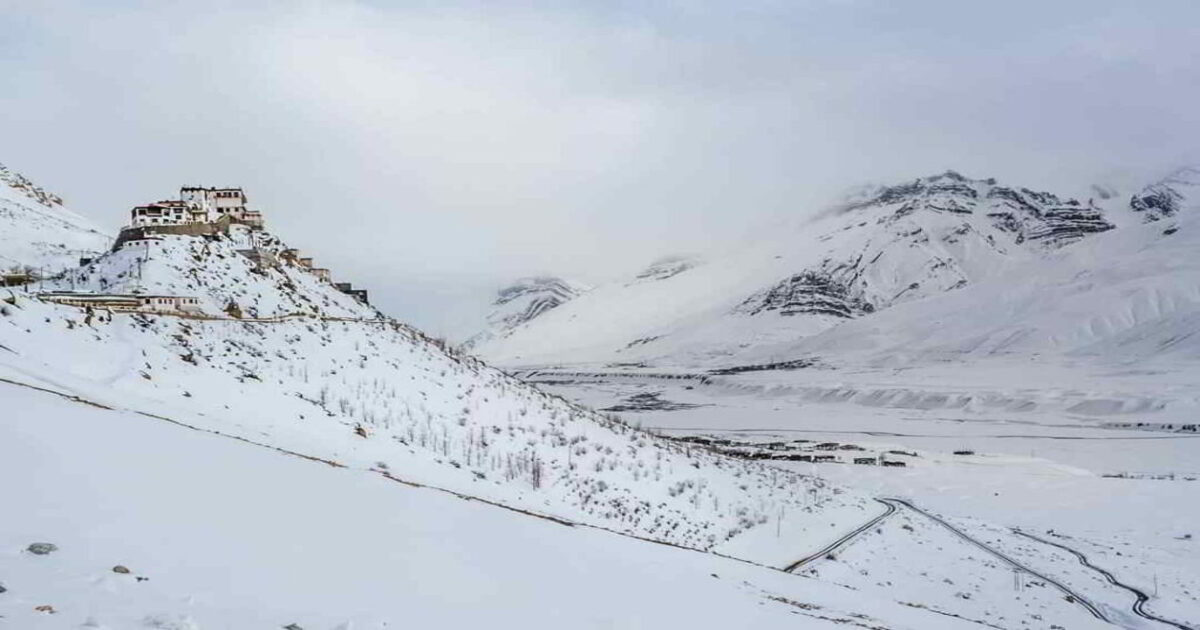
The best way to understand the valley’s rhythm is through its villages, especially during spiti in winters, when the pace slows and life turns inward. Langza offers stunning views of the Buddha statue against snowy peaks, while Kaza becomes the quiet winter hub where travelers gather around homestay bukharis. Kibber is the base for wildlife spotting, especially snow leopards, and the villages of Komic, Hikkim, and Demul provide a closer look at traditional winter lifestyles. Exploring the winter Spiti valley means walking through frozen alleys, sharing meals with locals, observing traditional farming storage, and experiencing a side of the Himalayas tourists rarely see.
Travelers often assume that spiti in winters limits activity, but winter actually opens up a different world of adventure. Snow leopard tracking remains the biggest draw, especially around Kibber and Pin Valley. Winter hikes on frozen trails, photography of snow-laden monasteries, and exploring untouched landscapes become part of everyday travel. Some villages even organize short winter trekking routes for experienced travelers. If you’re planning a winter spiti expedition, expect raw adventure, crisp air, and the kind of silence that makes the whole valley feel like a remote Arctic outpost.
Things to Pack
Packing for spiti in winters is the difference between comfort and struggle. Travelers need to carry heavy down jackets, layered thermals, snow boots, woollen socks, and windproof gloves, as the valley regularly dips below –20°C. Moisturizers, lip balm, sunscreen, and sunglasses are essential because snow glare and dry air are intense even in peak cold. Power banks, medications, and hot water bags help navigate limited resources in remote homestays. Proper gear ensures you can experience spiti valley in december or any winter month without compromising safety or comfort.
Practical Challenges in Winter
Since spiti in winters is unpredictable, prepare for:
- Road closures due to snowfall
- Limited electricity
- Patchy mobile networks
- Water shortages due to frozen pipes
- Frozen toilets (many homestays use dry toilets in winter)
- Reduced sunlight hours
Why Spiti in Winters Is Worth It
Despite the cold, the isolation, and the occasional roadblock, spiti in winters offers something you won’t find anywhere else in India—a raw winter landscape that is both brutal and beautiful. It forces you to slow down, stay present, and experience nature at its most elemental.
Whether you’re here for wildlife, photography, culture, or solitude, spiti valley in winter delivers experiences that summer cannot replicate. This is the valley at its purest—untouched, quiet, and deeply humbling. Join Explurger, meet travelers who are also seeking unforgettable exploration moments, find out travel secrets and hidden gems, and get revealed to a whole new layer of travel.
If you’ve been considering it, take it as a sign. Pack responsibly, plan well, and prepare for one of the most unforgettable journeys of your life.
FAQs About Spiti in Winters
3. Can we go to Spiti in winter?
Yes absolutely but it is harsh.

